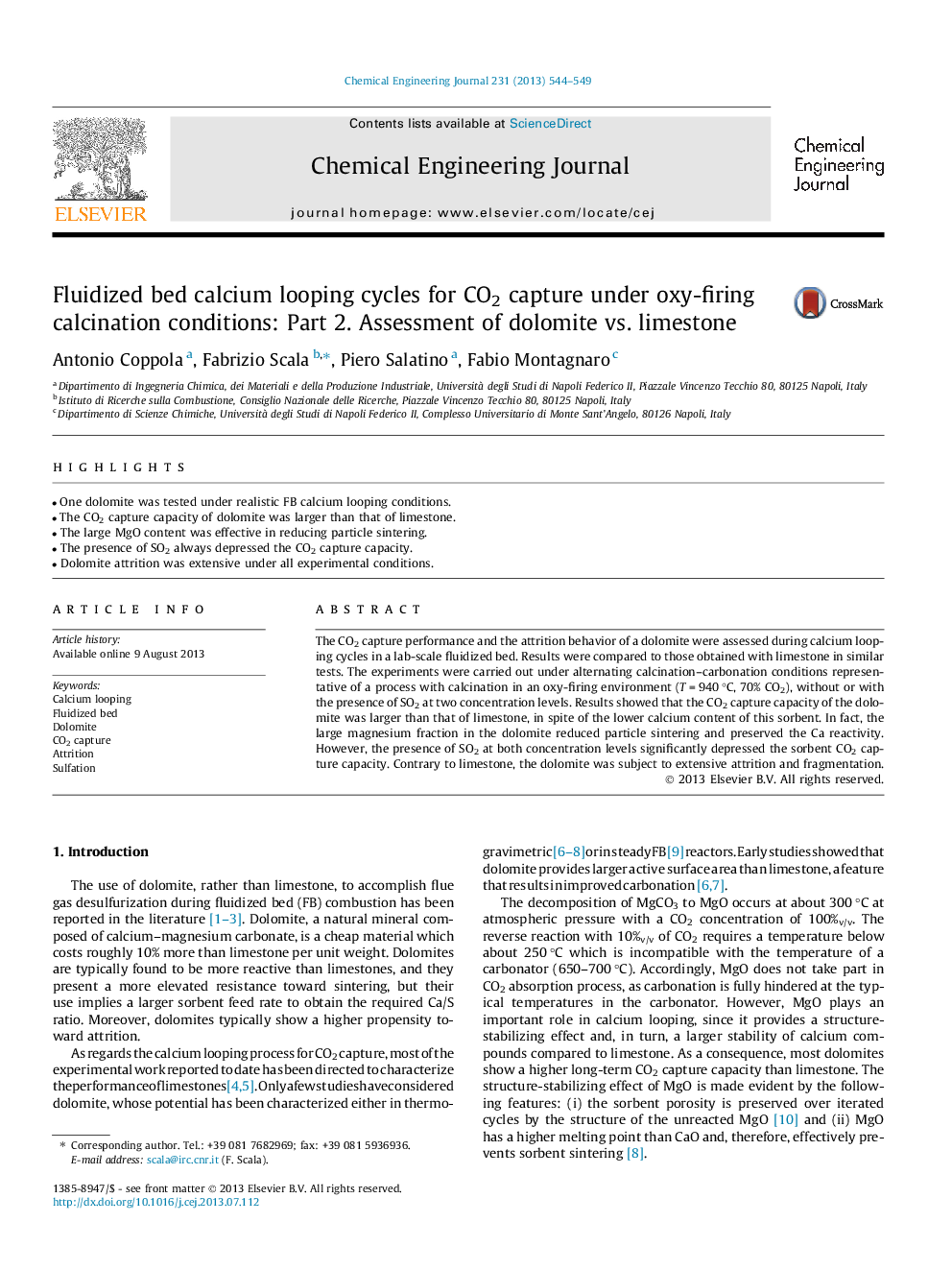| Article ID | Journal | Published Year | Pages | File Type |
|---|---|---|---|---|
| 148292 | Chemical Engineering Journal | 2013 | 6 Pages |
•One dolomite was tested under realistic FB calcium looping conditions.•The CO2 capture capacity of dolomite was larger than that of limestone.•The large MgO content was effective in reducing particle sintering.•The presence of SO2 always depressed the CO2 capture capacity.•Dolomite attrition was extensive under all experimental conditions.
The CO2 capture performance and the attrition behavior of a dolomite were assessed during calcium looping cycles in a lab-scale fluidized bed. Results were compared to those obtained with limestone in similar tests. The experiments were carried out under alternating calcination–carbonation conditions representative of a process with calcination in an oxy-firing environment (T = 940 °C, 70% CO2), without or with the presence of SO2 at two concentration levels. Results showed that the CO2 capture capacity of the dolomite was larger than that of limestone, in spite of the lower calcium content of this sorbent. In fact, the large magnesium fraction in the dolomite reduced particle sintering and preserved the Ca reactivity. However, the presence of SO2 at both concentration levels significantly depressed the sorbent CO2 capture capacity. Contrary to limestone, the dolomite was subject to extensive attrition and fragmentation.
